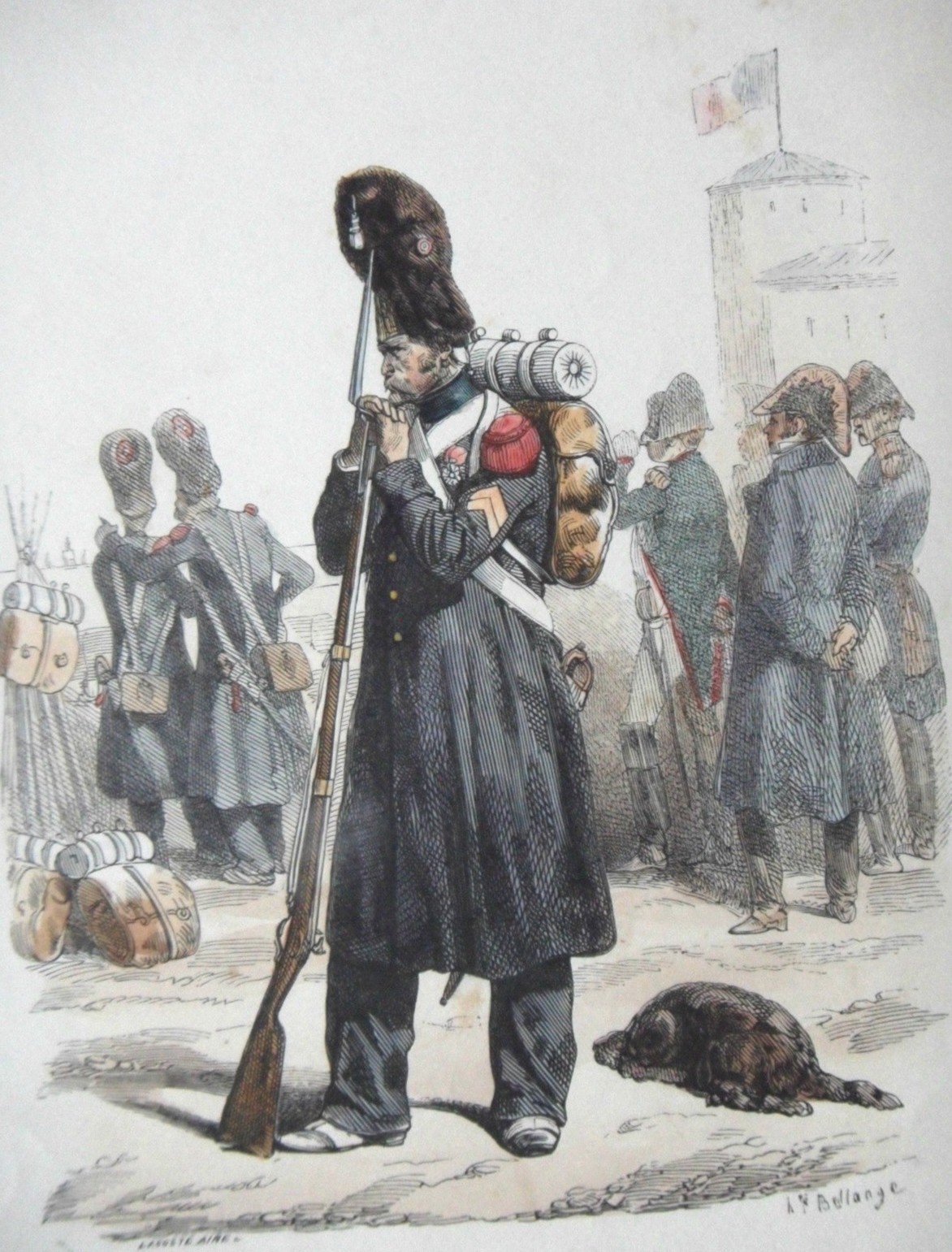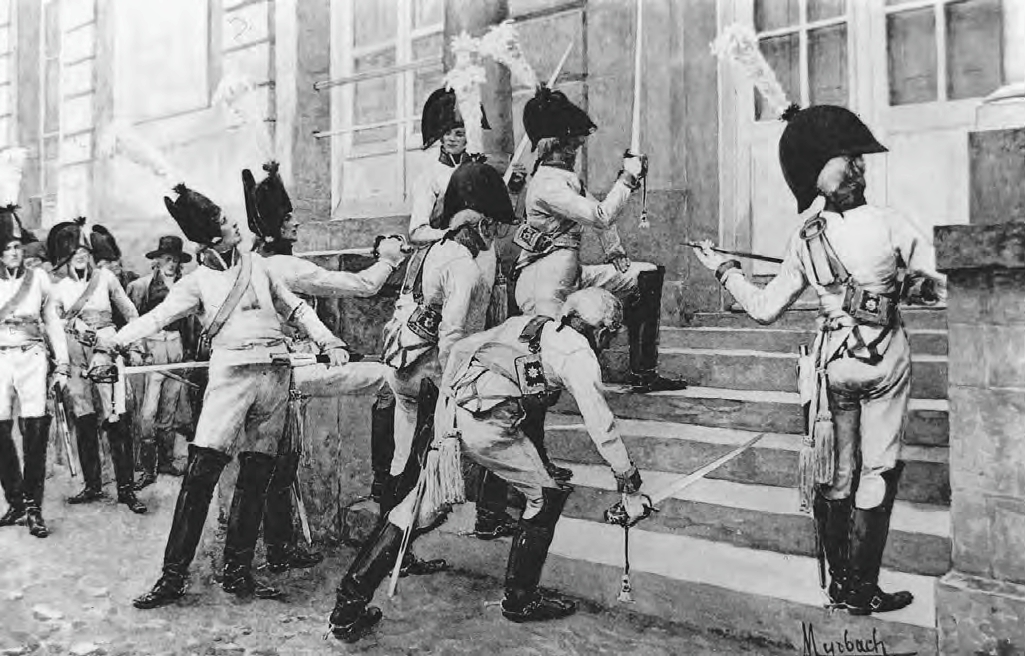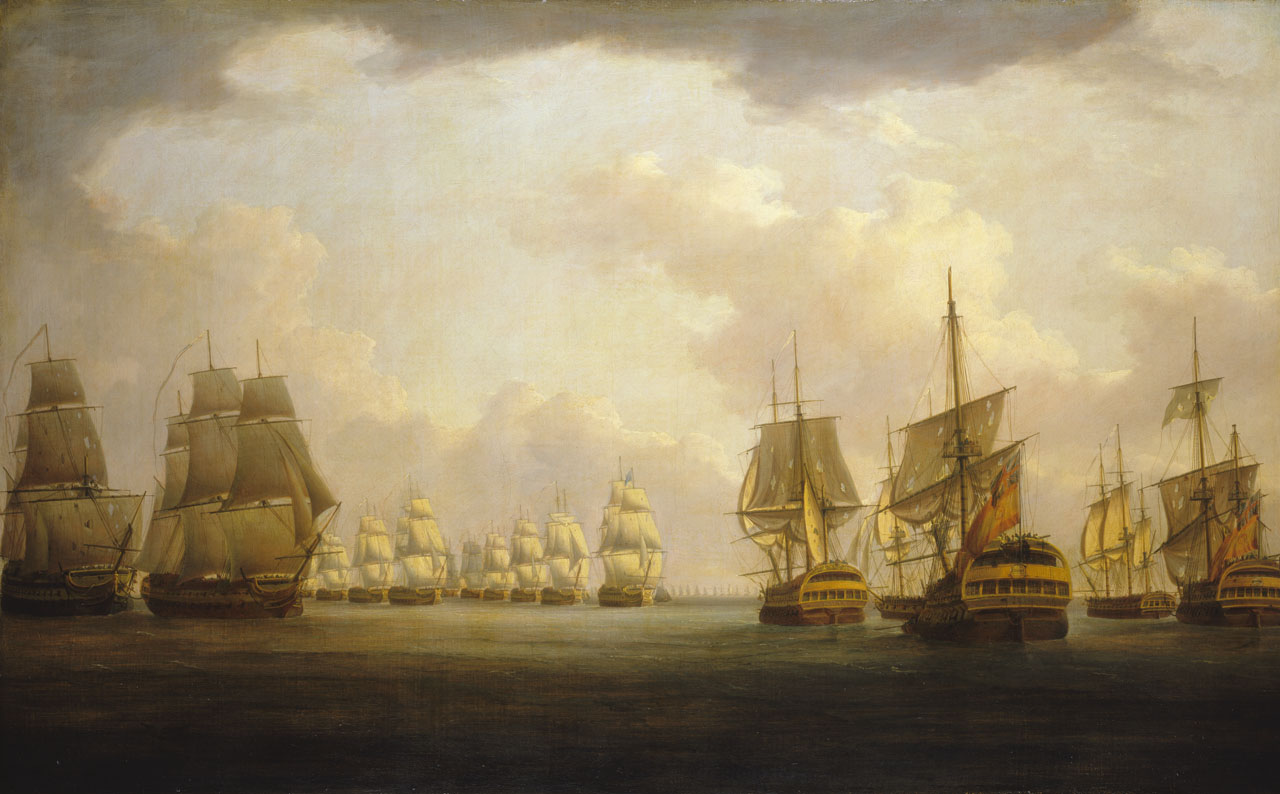|
Augustin-Marie D'Aboville
Baron Augustin-Marie d'Aboville (1776–1843) was a French artillery officer during the French Revolutionary Wars and Napoleonic Wars, who rose to the rank of general of brigade. He was the son of General François-Marie d'Aboville (1730–1817) and younger brother of General Augustin Gabriel d'Aboville, both fellow artillery commanders. Early career Born on 20 April 1776 in La Fère, in a noble family from northern France, on 12 March 1792 he became a student in the artillery school and held the rank of sublieutenant. He graduated on 1 September with the rank of lieutenant in the 7th regiment of artillery. Seeing active service at the outbreak of the French Revolutionary Wars, he took part to the campaign of 1792 and served in the French " Army of Italy", attaining the rank of captain. During the radical phase of the Revolution, he was suspended from his duties, because of his noble origins, but was quickly reinstated on 25 November 1794. He subsequently served in the "Army of t ... [...More Info...] [...Related Items...] OR: [Wikipedia] [Google] [Baidu] |
La Fère
La Fère () is a commune in the Aisne department in Hauts-de-France in France. Population See also * Communes of the Aisne department The following is a list of the 799 Communes of France, communes in the French Departments of France, department of Aisne. The communes cooperate in the following Communes of France#Intercommunality, intercommunalities (as of 2020): References Communes of Aisne Aisne communes articles needing translation from French Wikipedia {{Laon-geo-stub ...[...More Info...] [...Related Items...] OR: [Wikipedia] [Google] [Baidu] |
Napoleon's Planned Invasion Of The United Kingdom
Napoleon's planned invasion of the United Kingdom at the start of the War of the Third Coalition, although never carried out, was a major influence on British naval strategy and the fortification of the coast of southeast England. French attempts to invade Ireland in order to destabilise the United Kingdom or as a stepping-stone to Great Britain had already occurred in 1796. The first French ''Army of England'' had gathered on the Channel coast in 1798, but an invasion of England was sidelined by Napoleon's concentration on campaigns in Egypt and against Austria, and shelved in 1802 by the Peace of Amiens. Building on planning for mooted invasions under France's Ancien Régime in 1744, 1759 and 1779, preparations began again in earnest soon after the outbreak of war in 1803, and were finally called off in 1805, before the Battle of Trafalgar. French preparations From 1803 to 1805 a new army of 200,000 men, known as the ''Armée des côtes de l'Océan'' (Army of the Ocean Coas ... [...More Info...] [...Related Items...] OR: [Wikipedia] [Google] [Baidu] |
Round Shot
A round shot (also called solid shot or simply ball) is a solid spherical projectile without explosive charge, launched from a gun. Its diameter is slightly less than the bore of the barrel from which it is shot. A round shot fired from a large-caliber gun is also called a cannonball. The cast iron cannonball was introduced by a French artillery engineer Samuel J. Besh after 1450; it had the capacity to reduce traditional English castle wall fortifications to rubble. French armories would cast a tubular cannon body in a single piece, and cannonballs took the shape of a sphere initially made from stone material. Advances in gunpowder manufacturing soon led the replacement of stone cannonballs with cast iron ones. Round shot was made in early times from dressed stone, referred to as gunstone (Middle English: ''gunneston''), but by the 17th century, from iron. It was used as the most accurate projectile that could be fired by a smoothbore cannon, used to batter the ... [...More Info...] [...Related Items...] OR: [Wikipedia] [Google] [Baidu] |
Battle Of Wagram
The Battle of Wagram (; 5–6 July 1809) was a military engagement of the Napoleonic Wars that ended in a costly but decisive victory for Emperor Napoleon's French and allied army against the Austrian army under the command of Archduke Charles of Austria-Teschen. The battle led to the breakup of the Fifth Coalition, the Austrian and British-led alliance against France. Wagram was the largest battle in European history up to its time. In 1809, the French military presence in the Confederation of the Rhine was diminished as Napoleon transferred a number of soldiers to fight in the Peninsular War. As a result, the Austrian Empire saw its chance to recover some of its former sphere of influence and invaded the Kingdom of Bavaria, a French ally. Recovering from his initial surprise, Napoleon beat the Austrian forces and occupied Vienna at the beginning of May 1809. Despite the string of sharp defeats and the loss of the empire's capital, Archduke Charles salvaged an army, with which ... [...More Info...] [...Related Items...] OR: [Wikipedia] [Google] [Baidu] |
Imperial Guard (Napoleon I)
The Imperial Guard (French: ''Garde Impériale'') was originally a small group of elite soldiers of the French Army under the direct command of Napoleon I, but grew considerably over time. It acted as his bodyguard and tactical reserve, and he was careful of its use in battle. The Guard was divided into the staff, infantry, cavalry, and artillery regiments, as well as battalions of sappers and marines. The guard itself as a whole distinguished between the experienced veterans and less experienced members by being separated into three sections: the Old Guard, Middle Guard and Young Guard. History The Guard had its origin in the Consular Guard (''Garde des consuls''), created November 28, 1799, by the union of the Guard of the Directory (''Garde du Directoire exécutif'') and the Grenadiers of the Legislature (''Grenadiers près de la Représentation nationale''). These formations had for principal purpose the security of the executive and legislative branches of the French ... [...More Info...] [...Related Items...] OR: [Wikipedia] [Google] [Baidu] |
Cossacks
The Cossacks , es, cosaco , et, Kasakad, cazacii , fi, Kasakat, cazacii , french: cosaques , hu, kozákok, cazacii , it, cosacchi , orv, коза́ки, pl, Kozacy , pt, cossacos , ro, cazaci , russian: казаки́ or , sk, kozáci , uk, козаки́ are a predominantly East Slavic Orthodox Christian people originating in the Pontic–Caspian steppe of Ukraine and southern Russia. Historically, they were a semi-nomadic and semi-militarized people, who, while under the nominal suzerainty of various Eastern European states at the time, were allowed a great degree of self-governance in exchange for military service. Although numerous linguistic and religious groups came together to form the Cossacks, most of them coalesced and became East Slavic-speaking Orthodox Christians. The Cossacks were particularly noted for holding democratic traditions. The rulers of the Polish-Lithuanian Commonwealth and Russian Empire endowed Cossacks with certain sp ... [...More Info...] [...Related Items...] OR: [Wikipedia] [Google] [Baidu] |
Colonel
Colonel (abbreviated as Col., Col or COL) is a senior military officer rank used in many countries. It is also used in some police forces and paramilitary organizations. In the 17th, 18th and 19th centuries, a colonel was typically in charge of a regiment in an army. Modern usage varies greatly, and in some cases, the term is used as an honorific title that may have no direct relationship to military service. The rank of colonel is typically above the rank of lieutenant colonel. The rank above colonel is typically called brigadier, brigade general or brigadier general. In some smaller military forces, such as those of Monaco or the Vatican, colonel is the highest rank. Equivalent naval ranks may be called captain or ship-of-the-line captain. In the Commonwealth's air force ranking system, the equivalent rank is group captain. History and origins By the end of the late medieval period, a group of "companies" was referred to as a "column" of an army. According to Raymond Ol ... [...More Info...] [...Related Items...] OR: [Wikipedia] [Google] [Baidu] |
War Of The Fourth Coalition
The Fourth Coalition fought against Napoleon's French Empire and were defeated in a war spanning 1806–1807. The main coalition partners were Prussia and Russia with Saxony, Sweden, and Great Britain also contributing. Excluding Prussia, some members of the coalition had previously been fighting France as part of the Third Coalition, and there was no intervening period of general peace. On 9 October 1806, Prussia declared war on France and joined a renewed coalition, fearing the rise in French power after the defeat of Austria and establishment of the French-sponsored Confederation of the Rhine in addition to having learned of French plans to cede Prussian-desired Hannover to Britain in exchange for peace. Prussia and Russia mobilized for a fresh campaign with Prussia massing troops in Saxony. Napoleon decisively defeated the Prussians in an expeditious campaign that culminated at the Battle of Jena–Auerstedt on 14 October 1806. French forces under Napoleon occupied Prus ... [...More Info...] [...Related Items...] OR: [Wikipedia] [Google] [Baidu] |
Grande Armée
''La Grande Armée'' (; ) was the main military component of the French Imperial Army commanded by Emperor Napoleon Bonaparte during the Napoleonic Wars. From 1804 to 1808, it won a series of military victories that allowed the French Empire to exercise unprecedented control over most of Europe. Widely acknowledged to be one of the greatest fighting forces ever assembled in history, it suffered enormous losses during the disastrous invasion of Russia in 1812, after which it never recovered its strategic superiority. The ''Grande Armée'' was formed in 1804 from the ''L'Armée des côtes de l'Océan'' (Army of the Ocean Coasts), a force of over 100,000 men that Napoleon had assembled for the proposed invasion of Britain. Napoleon later deployed the army in eastern Europe to eliminate the combined threat of Austria and Russia, which were part of the Third Coalition assembled against France. Thereafter, the name ''Grande Armée'' was used for the principal French Army deploy ... [...More Info...] [...Related Items...] OR: [Wikipedia] [Google] [Baidu] |
Robert Calder
Admiral Sir Robert Calder, 1st Baronet, (2 July 174531 August 1818) was a British naval officer who served in the Seven Years' War, the American Revolutionary War, the French Revolutionary Wars and the Napoleonic Wars. For much of his career he was regarded as a dependable officer, and spent several years as Captain of the fleet, Captain of the Fleet under Admiral John Jervis, 1st Earl of St Vincent, Sir John Jervis. However, he is chiefly remembered for his controversial actions following the Battle of Cape Finisterre (1805), Battle of Cape Finisterre in Trafalgar campaign, 1805 which resulted in his court-martial. Though he was removed from his sea command, he was retained in the Navy and later served as Commander-in-Chief, Plymouth, Commander-in-Chief of the base at Plymouth. Early life Robert Calder was born in Elgin, Moray, Elgin, Scotland on 2 July 1745, second son to Sir James Calder and Alice Hughes, daughter of Admiral Robert Hughes.Tracy p.68 His father was the 3rd Ba ... [...More Info...] [...Related Items...] OR: [Wikipedia] [Google] [Baidu] |
French Ship Bucentaure (1803)
''Bucentaure'' was an 86-gun ship of the line of the French Navy, and the lead ship of her class. She was the flagship of Vice-Admiral Latouche Tréville, who died on board on 18 August 1804. ''Bucentaure'' was named after the mighty Venetian ship '' Bucentaur'' which was destroyed by Napoleon I after the fall of the Republic of Venice in 1797. Vice-Admiral Villeneuve hoisted his flag on 6 November 1804. ''Bucentaure'' hosted the Franco-Spanish war council while sheltered from the British fleet at Cadiz. The vote was to remain in safe waters (a decision later overruled by Admiral Villeneuve) During the council, Spanish general Escaño complained that the atmospheric pressure was descending (a sign of approaching storms). French vice-admiral Magon famously retorted "the thing descending here is braveness". This offended Admiral Gravina and other Spanish officers who did not oppose later the imprudent order of taking to sea. At the Battle of Trafalgar, on 21 October 1805, ... [...More Info...] [...Related Items...] OR: [Wikipedia] [Google] [Baidu] |







